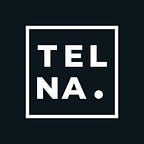This article aims to predict when the inflection point for mass traction of cellular IoT will occur. It examines:
- How historical telco trends achieved market success
- How those success factors are mirrored with cellular IoT today
- What challenges remain, with an expected timeline towards resolution
In recent times, cellular module costs have fallen, new cellular standards have been agreed upon to cater for all types of devices within the IoT ecosystem, while the GSMA, MNOs, and IoT systems integrators have created a landscape capable of addressing both roaming and local connectivity requirements on a global scale. The question therefore is no longer if, but when, cellular IoT achieves mass adoption relative to the scale of global IoT: can we predict an inflection point?
Growth in cellular IoT has been driven not only by increased efforts from MNOs to monetize the internet of things; with notable actors including Vodafone, AT&T, Deutsche Telekom and Telefonica reporting significant connection increases between 2017 and 2019; but also by systems integrators. Indeed, these comparatively smaller players have seen market growth to the tune of 73% during the same period, outflanking the MNO market when China is excluded from the count.
How historical telco trend success factors are mirrored in cellular IoT
One avenue to predict cellular IoT’s inflection point is to examine how successful telco technology trends have evolved in the past: A2P messaging, cloud computing, and the rise of global MVNOs are notable examples of these. Examining these trends more closely reveals several common factors:
- A2P makes use of broad coverage and ubiquitous technology to enable the ability to reach the recipient almost anywhere in the world, at any time. Cellular IoT finds commonality with this success factor via the emergence of eSIM technology alongside broad roaming agreements.
- Both A2P and cloud computing are trusted reliable services. These features are found both inherently within cellular technology and are enhanced by the GSMA’s eSIM specification. For example, it is mandated that players involved in SIM manufacturing and eSIM provisioning and subscription management are part of a certified scheme, reducing the scope for tampering along the value chain. The specification also ensures interoperability between actors.
- MVNOs across the globe have emerged in response to demand for specialized services and minority demographics within a serving market, where MNOs have either been unwilling or unable to invest in catering for these segments. The same can now be said for cellular IoT, with the MNO market accompanied by over 40 global IoT systems integrators offering cellular technology connectivity, with broad roaming agreements and eSIM support to provide services on a global level. Many of these cellular IoT systems integrators have now evolved from pure connectivity players towards more comprehensive portfolios, either directly or in the form of partnerships, simplifying the overall IoT journey.
Putting it together: when is cellular IoT’s inflection point?
Many of the ingredients needed to catalyze the industry are already in place:
- Cellular IoT is reliable.
- Cellular IoT is secure.
- Cellular IoT can cater for specialist requirements.
- Mechanisms have been established to achieve global coverage.
However, some elements of the market have not yet fully matured. Examples of these include:
Based on this analysis, Kaleido Intelligence estimates that cellular IoT’s inflection point is approximately 2–3 years away. More mature M2M/IoT markets will likely see traction earlier, owing to extant service provider activity alongside relatively well-established business models and knowledge of the market. It is highly likely that the Covid-19 pandemic will have a significant impact on both present and future cellular IoT deployments. Many service providers are reporting some downturn in demand in 2020, which has certainly been expected owing to supply chain bottlenecks and uncertainty surrounding immediate finances. However, it has now been established that cellular IoT can play a critical role in mitigating the negative impact experienced by businesses during the height of the pandemic. In turn, this will drive demand, beginning in 2021, and accelerating from 2022 onwards.
Originally published at https://www.telna.com by Gregory Gundelfinger.
